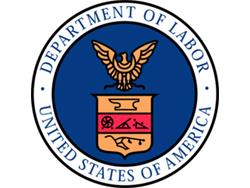Inflation Declined in March with CPI Up 2.4% Annually
Washington, DC, April 10, 2025-The Consumer Price Index for All Urban Consumers (CPI-U) decreased 0.1% on a seasonally adjusted basis in March, after rising 0.2% in February, the U.S. Bureau of Labor Statistics reported.
Over the last 12 months, the all-items index increased 2.4% before seasonal adjustment.
The index for energy fell 2.4% in March, as a 6.3% decline in the index for gasoline more than offset increases in the indexes for electricity and natural gas. The food index, in contrast, rose 0.4% in March as the food at home index increased 0.5% and the food away from home index rose 0.4% over the month.
The index for all items less food and energy rose 0.1% in March, following a 0.2% increase in February.
Indexes that increased over the month include personal care, medical care, education, apparel, and new vehicles. The indexes for airline fares, motor vehicle insurance, used cars and trucks, and recreation were among the major indexes that decreased in March.
The all-items index rose 2.4% for the 12 months ending March, after rising 2.8% over the 12 months ending February. The all items less food and energy index rose 2.8% over the last 12 months, the smallest 12-month increase since March 2021. The energy index decreased 3.3% for the 12 months ending March. The food index increased 3.0% over the last year.
“Inflation cooled last month, with a year-over-year measure of underlying prices falling to its lowest level in four years,” said the Wall Street Journal.
“Prices excluding food and energy categories-the so-called core measure economists watch in an effort to better capture inflation’s underlying trend-rose 2.8%, below forecasts for a 3% increase. That was the smallest increase in the core measure since March 2021.
“Over the month, energy prices declined steeply, with gasoline prices plunging 6.3%. Prices fell in categories including airline fares, vehicle insurance, and used cars and trucks. Prices picked up for food, medical care, clothing and new vehicles.
“Normally, a slowdown in year-over-year price increases would be welcome news. But this time, it will be hard for investors, policymakers and businesses to read too much into the March data.
“President Trump’s ‘Liberation Day’ announcement of sweeping new tariffs didn’t happen until April 2, which means their direct effects won’t show up until the next consumer-price report a month from now. Trump also announced late Wednesday that he was pausing many of the tariffs he had just announced, which will likely throw businesses into further confusion.
“Stocks had soared Wednesday after the tariff pause was announced. U.S. stock futures were down Thursday morning, and they remained in the red after the inflation report-a sign that investors still expect tariffs to weigh on growth and boost inflation in the future.
“The back-and-forth over President Trump’s tariff policies have made businesses and consumers nervous. Some of Trump’s tariffs did go into effect in March, including fees on some goods from Mexico and Canada and some levies on Chinese products.
“Still, it was the April 2 announcement that really sent markets into a tailspin and prompted Wall Street economists to raise their forecasts for inflation this year. Then on Wednesday, markets soared after Trump announced in a social-media post that he had authorized a 90-day pause on certain tariffs to most countries. He also said he raised the tariff imposed on China to 125%, ‘effective immediately.’”
